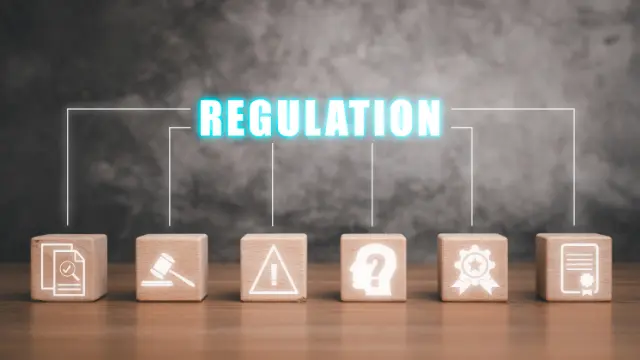Streamline Your Credit Risk Assessment with Intelligent Automation
The lending industry relies heavily on accurate and efficient credit risk assessment to make informed decisions. Traditional manual processes can be time-consuming, error-prone, and lack the necessary agility to keep pace with the evolving regulatory landscape. Credit Risk Assessment Automation using Python, AI, and cloud-based solutions offers a transformative solution to these challenges.
Python’s versatility and robust data handling capabilities make it an ideal choice for automating complex calculations and data analysis involved in credit risk assessment. AI algorithms can enhance the accuracy of risk assessment by leveraging historical data and identifying patterns that may be missed by human analysts. Cloud-based solutions provide the scalability and flexibility needed to handle large volumes of data and deliver real-time insights.
Credit Risk Assessment Automation empowers lenders to:
- Reduce processing time and improve operational efficiency
- Enhance accuracy by eliminating manual errors and leveraging AI
- Increase transparency and compliance by providing auditable records
- Gain real-time insights to make faster and more informed decisions
- Improve customer experience by providing timely and accurate loan approvals

Python, AI, and Cloud: The Power Trio for Credit Risk Assessment Automation
Python’s versatility and ease of integration make it a powerful tool for developing both unattended and attended bots for Credit Risk Assessment Automation.
Unattended bots can be programmed to perform repetitive tasks such as data extraction, calculation of credit scores and ratios, and generation of risk assessment reports. This frees up human analysts to focus on more complex and value-added tasks.
Attended bots can assist human analysts by providing real-time guidance and support. For example, an attended bot can help an analyst identify potential risks or recommend appropriate actions based on the specific characteristics of a loan application.
Cloud platforms offer a range of benefits for Credit Risk Assessment Automation, including:
- Scalability: Cloud platforms can easily handle large volumes of data and multiple concurrent users.
- Flexibility: Cloud platforms allow for rapid deployment and scaling of automation solutions, making it easy to adapt to changing business needs.
- Security: Cloud platforms provide robust security measures to protect sensitive financial data.
- Cost-effectiveness: Cloud platforms offer pay-as-you-go pricing models, eliminating the need for upfront infrastructure investments.
AI plays a crucial role in enhancing the accuracy and efficiency of Credit Risk Assessment Automation. AI algorithms can:
- Identify patterns and trends: AI can analyze historical data to identify patterns and trends that may not be apparent to human analysts. This can help improve the accuracy of risk assessments.
- Handle edge cases: AI can be trained to handle complex and unusual cases that may not be covered by traditional rules-based automation.
- Automate decision-making: AI can be used to automate certain decision-making processes, such as loan approval or denial, based on pre-defined criteria.
Specific AI techniques that can be applied to Credit Risk Assessment Automation include:
- Image recognition: AI can be used to extract data from scanned documents, such as financial statements or tax returns.
- Natural language processing (NLP): AI can be used to analyze unstructured text data, such as credit reports or customer emails.
- Generative AI: AI can be used to generate synthetic data, which can be valuable for training and testing automation models.

Building the Credit Risk Assessment Automation with Python and Cloud
The Credit Risk Assessment Automation process can be broken down into several sub-processes, each of which can be automated using Python and cloud services:
- Data collection: Python scripts can be used to extract data from various sources, such as credit bureaus, financial institutions, and internal databases. Cloud-based storage services can be used to store and manage the collected data.
- Data analysis: Python libraries can be used to perform data analysis tasks such as calculating credit scores and ratios. Cloud-based computing resources can be used to handle large volumes of data and complex calculations.
- Risk assessment: AI algorithms can be used to assess the risk associated with each loan application. Cloud-based platforms provide the scalability and flexibility needed to handle multiple concurrent risk assessments.
- Report generation: Python scripts can be used to generate risk assessment reports that summarize the findings of the automation process. Cloud-based document management services can be used to store and manage the generated reports.
Data security and compliance are of utmost importance in the lending industry. Python provides robust encryption and data protection mechanisms to ensure that sensitive financial data is handled securely. Cloud platforms offer compliance certifications and security measures to meet regulatory requirements.
Compared to no-code RPA/Workflow tools, Python offers several advantages for building Credit Risk Assessment Automation:
- Flexibility: Python is a general-purpose programming language that allows for greater flexibility and customization in automation development.
- Scalability: Python can handle large volumes of data and complex calculations, making it suitable for enterprise-scale automation solutions.
- Integration: Python can be easily integrated with a wide range of cloud services and third-party applications, enabling end-to-end automation.
Algorythum takes a different approach to Credit Risk Assessment Automation because we understand the limitations of off-the-shelf automation platforms. Our Python-based solutions are designed to meet the specific needs of the lending industry, providing greater flexibility, scalability, and accuracy.
We have witnessed client dissatisfaction with the performance of off-the-shelf automation platforms, which often lack the necessary customization capabilities and can be difficult to integrate with existing systems. Our Python-based approach addresses these challenges, delivering tailored automation solutions that drive real business value.

The Future of Credit Risk Assessment Automation
The future of Credit Risk Assessment Automation is bright, with numerous possibilities to extend and enhance the proposed solution using other emerging technologies:
- Machine learning (ML): ML algorithms can be used to improve the accuracy and efficiency of risk assessment models. For example, ML can be used to identify hidden patterns and relationships in data that may not be apparent to traditional statistical methods.
- Artificial intelligence (AI): AI can be used to automate more complex tasks, such as decision-making and scenario analysis. For example, AI can be used to develop chatbots that can answer customer questions about their loan applications or to recommend appropriate loan products based on their risk profile.
- Blockchain: Blockchain technology can be used to create a secure and transparent record of all transactions related to the Credit Risk Assessment Automation process. This can help to improve trust and confidence in the automation solution.
Subscribe to our newsletter to stay up-to-date on the latest trends and innovations in Credit Risk Assessment Automation.
Contact our team to get a free feasibility assessment and cost estimate for your custom automation requirements. We will work with you to develop a tailored solution that meets the specific needs of your lending institution.

Algorythum – Your Partner in Automations and Beyond
At Algorythum, we specialize in crafting custom RPA solutions with Python, specifically tailored to your industry. We break free from the limitations of off-the-shelf tools, offering:
- A team of Automation & DevSecOps Experts: Deeply experienced in building scalable and efficient automation solutions for various businesses in all industries.
- Reduced Automation Maintenance Costs: Our code is clear, maintainable, and minimizes future upkeep expenses (up to 90% reduction compared to platforms).
- Future-Proof Solutions: You own the code, ensuring flexibility and adaptability as your processes and regulations evolve.









